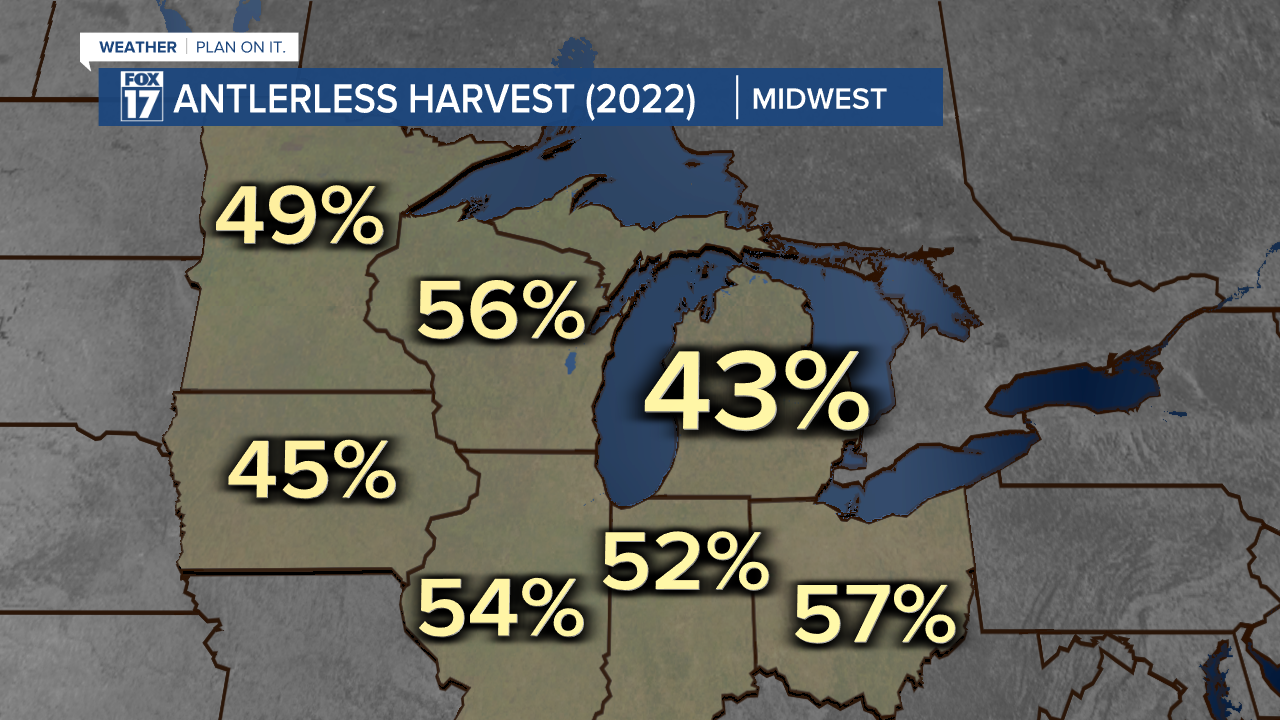LANSING, Mich. — The DNR wants deer hunters in the Lower Peninsula to set their firearm's sights on antlerless deer this season as the state's total deer population continues to grow amidst a decline in hunting.
"Our culture has changed, our landscape has changed, our deer herd has changed," said Chad Stewart, a DNR deer biologist.
In September, Stewart released 'An open letter to Michigan's deer hunters,' to start some "frank conversations about deer management in this state."
"These are things that need to be stated," Stewart said in the letter.
In 2022, hunters in the state of Michigan harvested 131,034 antlerless deer (the term refers to does, button bucks and shed bucks), accounting for around 43% of the total harvest (303,057 deer).

For 13 consecutive years, in fact, the state has failed to take more antlerless deer than antlered deer.
That gap is only getting wider, according to the DNR, with mindsets like "get your buck, then wait for a bigger buck," and the younger generation not choosing to pick up their parents' rifles.
Since the early 2000s, Stewart says the state's antlerless harvest has decreased 28%, while the antlered harvest has decreased only 11%. By 2040, the DNR predicts the number of hunters in Michigan to fall to 450,000, a steep drop from the 800,000 documented in 2000.
"We can't keep doing the same things and expect different results," Stewart said in a September interview with FOX 17. "We need to stop dancing around this issue."


For some context, Michigan's Midwest neighbors continually harvest more does than bucks, with the states of Ohio and Wisconsin reporting a 57% and 56% antlerless harvest in 2022, respectively.
In the letter, Stewart proposed hunters take an additional one to one and a half antlerless deer in each square mile of the Lower Peninsula this season (a 40,000 to 60,000 increase).
"While not every square mile is created equally," Stewart said. "Such an increase in total harvest CAN be achievable, especially in areas where deer are abundant."

If hunters follow Stewart's suggestion, the strategy may balance the state's doe-to-buck ratio and intensify the "competition for breeding" during the rut.
"I am asking hunters to consider the long-term benefits of being selective in their choice of taking a buck," Stewart said.
In addition, a more populous, doe-heavy harvest would mean less deer-related car crashes, less agricultural issues and create a lower risk for outbreaks of Chronic Wasting Disease (CWD).
"We simply don't want to manage our deer herd with diseases," Stewart said. "Our goal is to try to manage for a sustainable and healthy deer herd."
To that end, the DNR has considered an "earn a buck" rule or transitioning the youth hunt to be antlerless-only and Stewart says the current doe population can handle the larger target on their backs, even early in the season.
"We simply need to do better with antlerless deer," Stewart said in the letter. "Our reputation as conservationists may be defined by it!"





